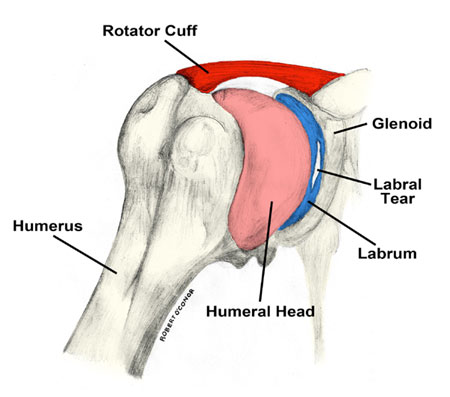Overview
The
labrum surgery is getting very
common now a days and is performed after advanced research. Among the last few
years arthroscopy of the joints is getting very advanced and the diagnosis as
well as the treatment methods are changed and are well satisfactory among the
patients.
Introduction
Patients
with labral tears often do complain about the pain. When the patient complains
about the symptoms suffering from the hip pain he or she is considered a best
candidate for arthroscopy of the hip joint. However the rehabilitation
procedure is also taken into account after the arthroscopy.
MOI
stands for mechanisms for injury which involves repetitive cutting, twisting
and also the movements to repetitive flexion at the hip or the other joints.
Patients having injury or history of associated pain will explain with
insidious complaints of groin pain and indications like bolting and giving
away.
Surgical involvement
Labrum surgery performed with arthroscopic techniques for treating
the hip pain are becoming very common in adults as well as in children. Be
alert, with the conditions such as fractures, acetabular dysplasia impingement,
femoral acetabular,degenerative conditions of the joint, or non-compliance with
the recovery program may avert the surgical involvement. After the complete
examination of the joint if any labral abnormality is addressed then the
degeneration of osteoarthritis of the hip joint.
If
the surgery is successful and the pain is relieved then the further surgery
will lead to joint alteration and the progression of articular cartilage
changes. Alterations to the arrangement of the labrum, or trouble in the
acetabular labral junction, may cause to the injury of the forced fluid film
layer present in the joint.
Rehabilitation process
After
the arthroscopy of the acetabular labrum now many new surgical procedures have
been introduced in medical field and also constantly evolving. The
responsibility of the physical therapist is to keep himself up to date with the
new exercises. It is for you to develop good communication as well as to
establish and maintain the relation with orthopedic surgeon.
The
location of the tear must be kept in mind and must be told to the physical
therapist so he/she could tell the exact exercises for the labral tear. However
it is to keep in mind that exercises and some of the strengthening methods can
be delayed depending upon the healing of the tissue.
Doctor
and health professionals will prescribe a good and healthy timelines entirely
based on clinical findings of active and healthy individuals. Carful steps,
exercises and the frequent assessment checks must be continued so that there
should be no loss of mobility and flexibility of the muscle.
